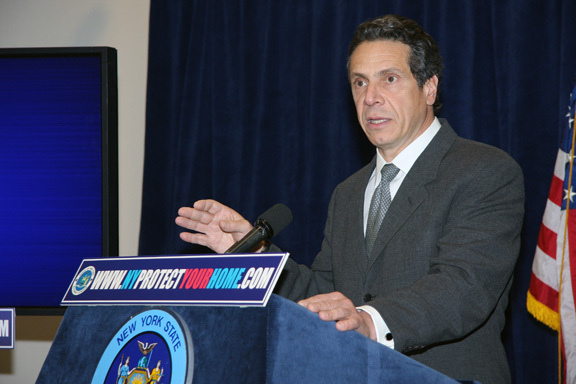Not ready to crack open the piggy bank in East Meadow
E.M. school district carefully applies reserve funds to budget
The rainy day is here. At least that’s what Gov. Andrew Cuomo hinted recently when he pointed out that school districts maintain special reserve funds for economic times like these.
Commonly referred to as the “rainy day fund” — or occasionally as the “pantry” or the “cupboard” — the East Meadow School District’s reserve fund totals about $17 million — the highest among Long Island districts.
But Superintendent Louis DeAngelo is cautious. It’s not time to raid the pantry, he explained.
“The reserves which we have represent many years of very careful planning,” DeAngelo said. “You balance budgets wisely while still providing quality programs, within a tax levy which is fair and appropriate, in order to be able to maintain continuity of instruction and programs in times such as these.”
During a presentation of the proposed state budget at Hofstra University on Feb. 7, Cuomo told the audience that one way to offset his proposed cuts in aid for education would be to tap into those reserves. According to Cuomo, schools across the state have a combined $1.2 billion in reserves, and an additional $600 million in federal stimulus funds that were not spent — a total of $1.8 billion. The proposed statewide cuts to education aid total $1.5 billion.
“There’s more in reserves and unspent federal money than the state reduction,” Cuomo said.
Not that East Meadow is hiding a buried treasure chest. In the preliminary budget proposal for next year, DeAngelo said, the district is incorporating at least $5 million of its reserves to cover the governor’s proposed cut in aid as well as mandated costs. The projected reduction in state aid to East Meadow is approximately $4.5 million.
If the district did not have the means, at least for now, to make up for such cuts, it would have to take drastic measures, such as cutting programs and jobs. According to school officials, making up $5 million in a budget could have translated into the elimination of 60 to 70 positions.









